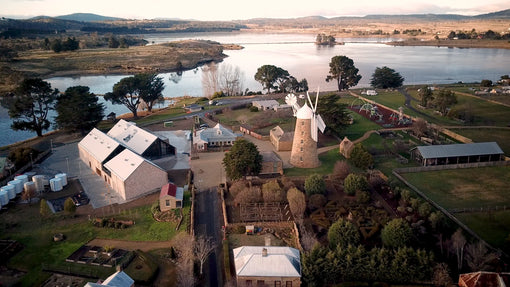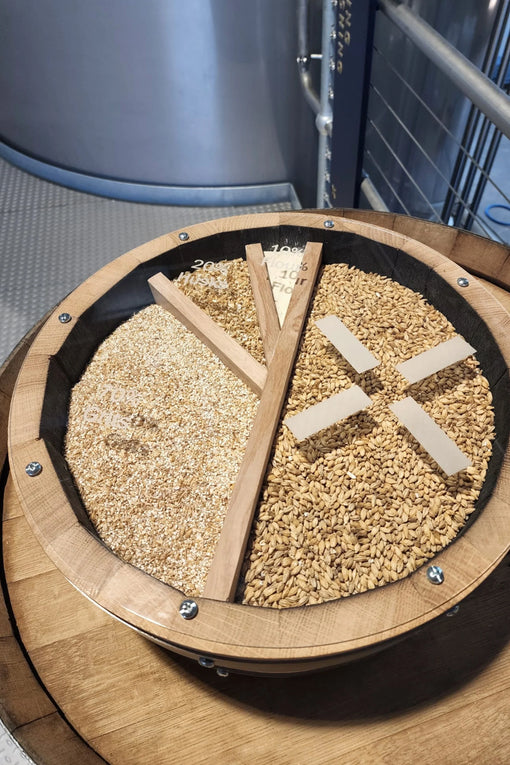
With so many awards in recent years, it's obvious that Tasmanian whisky makers are doing something very right. Is it the local water, or is it the barley? Could it be the climate? Actually, Taz boasts the ideal combination of location, weather, and locally-sourced ingredients that make it the perfect place for making whisky. Plus LOVE of course. Tasmania's own Callington Mill Distillery practically swept the 2022 San Francisco World Spirits Competition with eight awards for single malt whisky and additionally a medal for its incomparable Poltergeist Gin. Four of the awards for Callington Mill Single Malt Whisky were highly regarded Double Gold awards, identifying them as "among the finest products in the world."ALMOST AS SCOTTISH AS SCOTLANDDespite the lack of Hebridean gorse and the presence of local eucalyptus, Tasmania sometimes feels closer to Scotland than to Sydney, said The Guardian in a 2014 article that went on to extol the area's cool air, grey skies, lush countryside, local highland peat, and abundance of impeccably clean water that make Tasmania an ideal location for distilling spirits.THE FORESIGHT OF BILL LARK Heralded as the Godfather of modern Tasmanian whisky, Bill Lark was well aware of our favourite island's potential for producing world-class whisky years before bringing forth his first bottles. As Broadsheet tells the story, Lark and his father in law were enjoying each other's company on a fishing trip in the highlands when the pair put forth the idea of using the local barley, water, peat, and climate to produce whisky that could rival Scotland. In 1992, Lark did just that, opening the first small, legal distillery in Tasmania in more than 150 years.WATERAs whisky's main component, water has everything to do with the final product of any distillery. It is well known that the water that flows from the Tasmanian highland rainforests to the midlands to the Blackman River is some of the most pristine H20 anywhere on Earth. Tasmanian Rain, a company that catches, bottles, and sells local rainwater, explains that the air currents that bring rain to Tasmania's western shores originate in Antarctica before traveling across thousands of miles of open ocean, resulting in water that is clean, refreshing, and without impurities. Unlike England where water is generally hard, or high in mineral content, Scotland's water tends to be as soft as rainwater and just right for making whisky. The same can be said for Tasmania, where water hardness levels rarely exceed 10 mg per litre, explains Tales of Travelling Sisters. Acidity, or pH of Tasmanian stream water typically ranges between 5.5 and 7.5 except for humic-rich Tassie lakes and rivers with a pH range of 4.0 to 6.5, explains the Department of Natural Resources and Environment Tasmania. Even if you drink your whisky neat, you may enjoy diluting it a bit with spring water before imbibing. In fact, Scottish pubs always present a jug of the stuff whenever whisky is ordered, notes Whisky magazine.BARLEY One of the most famous phrases ever uttered about barley came from the lips of Lady Jane Franklin, wife of Governor John Franklin who exclaimed: "I would prefer barley be fed to pigs than it be used to turn men into swine."Today, whisky aficionados the world over appreciate the humble grain's contribution to adult enjoyment much more than Lady Jane Franklin ever did. She convinced her husband to outlaw the distilling of spirits in Tasmania. Tasmania is perfectly positioned to take full advantage of the barley that thrives in our locale. Hordeum vulgare (Barley) is a tolerant crop that tends to flourish in well-drained Tasmanian soils and does not require a lot of supplementary irrigation, explains the Australian Department of Natural Resources. Bill Lark described the traditional brewing barley he exclusively used to craft his superb whisky as advantageous due to its "big fat oily malt" flavour. Callington Mill is another Tassie distillery that only uses the locally-sourced barley that makes Tasmanian whisky a serious contender on the world whisky stage. Without it, a dram might be good, but it would not measure up to the award-winning bottles produced by local distillers. CLIMATEThe maritime temperate climate of Tasmania with its long hot summer days, short cold winter days, plentiful sunshine, and generally low humidity is just right for distilling single malt whisky. Here in Tasmania, the air is as clean as the water. So clean, in fact, that the World Meteorological Organization–Global Atmosphere Watch maintains a Baseline Air Pollution monitor station on the island. To learn more about Tasmania's clean air see this article. HIGHLAND PEATIn the 20th century, Australian whisky makers relied on imported Scottish peat to dry and smoke locally-grown barley. It was not until the 1990s that Tasmanian highland peat was considered a viable option, when Lyn and Bill Lark became the first legal modern distillers in Taz. Today, some Tassie distillers employ Taz-grown peat to deliver the subtle, earthy smokiness that makes local “peaty” malt whisky such a delight.COPPER STILLS AND OAK CASKS Ingredients, climate, and water contribute mightily to Tasmanian whisky, but they're not the only factors that matter. The stills in which whisky is distilled and the casks in which it ages are also imperative to the quality of the final product. Copper pot stills such as those used by Callington Mill are not only beautiful to look at, they interact in a positive way with vapour during distillation. Inside a copper still, fruity esters are developed and volatile sulfur compounds, including ethyl carboxamide, trimethyl-sulphide, and dimethyl trisulphide are removed, explains Scotch Whisky magazine. Another plus to copper stills is the way the natural element inhibits bacterial contamination.Casks also figure into the final flavour of whisky. This is why Callington Mill matures exclusively in Oak casks sourced and crafted by our own Callington Mill Cooperage. Callington Mill’s Oak policy determines our whiskey profile - our final character - our DNA. We predominately use the best quality ex fortified wine Oak Casks from the Douro Valley in Porto Portugal and from the Sherry Triangle region Jerez de la Frontera in Andalucia Spain. We also source the best Australian ex fortified wines. This represents 80% of our Oak strategy. In order to add layers of diversity and complexity we source the remaining 20% of our oak program from the exotic regions of the world - France - Mexico - Jamaica - South America - US - Japan. We are also trying to secure Oak supply from regions never before used in whiskey making. This will remain a secret - so stay tuned. Now that you understand why Tasmania is the perfect place to make the perfect whisky, we hope you will try it for yourself. If you have any questions about our ingredients, contact us and ask us anything.
Learn More


